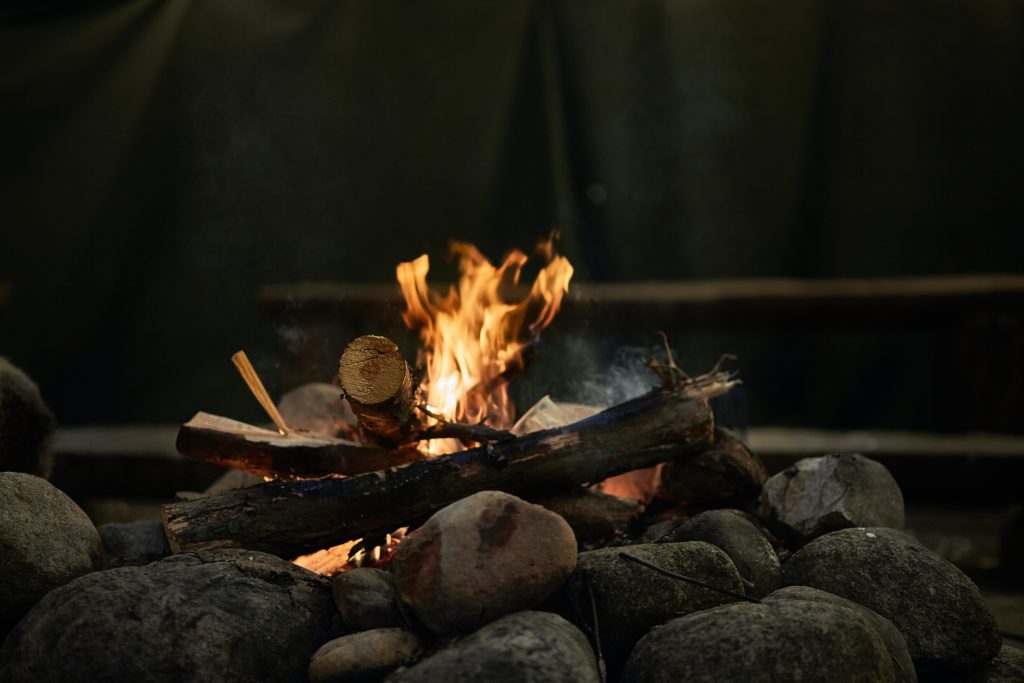
All across Australia, there are families, early childhood educators and teachers who have one thing in common – their agreement that children are more capable than we give them credit for.
Since the beginning of time, people of all ages have been fascinated by fire. In the same way humans find solace in being close to water, we find comfort in looking into the familiar flicker and warm crackle of flames.
Australia is no stranger to the very real damage fire can cause – to us, to our homes and to the land we are a part of. This is one of the reasons that there is value in allowing children to experience fire in a controlled way, so children can learn and understand it better. We know that with education comes safety.
When knowledgeable educators facilitate risky activities, wonderful things can happen! Children can be exposed to fire in early childhood settings, after careful planning and conversations. Generally, children aged 3-5 years are old enough to understand the concepts of safety and they are capable of following rules under supervision.
So how do you make this happen?
Safety First – Risk Assessment
Early childhood settings are heavily regulated, but those regulations don’t mean we have to eliminate all risks. Children need to be exposed to age appropriate risky environments and activities as they grow in order to develop their ability to regulate and correctly assess risk.
Take the time to work through your service’s ‘Risk Assessment’ process and complete any required forms. Ensure your supervisor signs off on the processes you will have in place to ensure the safety of the children and adults participating.
This can be a good time to use a ‘risk benefit analysis’ to highlight the learning and engagement opportunities for children.
After completing the risk assessment you will need to decide if you are going to proceed. If the risks are still too high – more planning will need to be done to ensure safety. Circulate and display your planning so everyone can read and understand what is taking place.
Start small
Fire safety begins before the fire. With children of this age you can engage in adult directed, intentional teaching times. In the lead up to your fire experiences, have in depth conversations with the children about fire safety. You could even invite the local fire authority in your state to visit, all of which offer community programs to teach children about fire safety. I will provide some links at the end.
Explain to the children that you will be starting their learning about fire and heat and how to be safe around these. Capitalise on ‘teachable moments’ throughout the day. You could start with a hot (not boiling) pot of tea to share, and some small tea candles in jars on the table during morning tea. The focus will be on children taking care and slowing down around heated things. Encourage the children to explore with their eyes – teaching them about heat and how it will hurt them if they touch it. A small hand to a warm mug of tea, or a finger to a warm glass jar will let them safely experience heat.
Many children will have already been around heat or a fire – it could be a campfire with their family, a fireplace in the living room, a BBQ on the weekend, candles at home or incense on an altar. Offer children the opportunity to contribute their knowledge and experience to the group, this will allow them a sense of connection and ownership in recognising their own past skills which they can feel proud of.
Work with the children to set rules and boundaries, so they understand them and have ownership of them. Some rules could be “Don’t run near the fire” or “Don’t touch the fire” or “Shoes on near the fire”.
Plan your space
You will need to choose a safe space for your fire. Some services use a man-made metal fire pit that you can purchase at any hardware shop, others make a spot especially for their fireplace in the outdoor area. Ensure you don’t have a fire under a shade cloth or a low hanging tree, and that your spot has enough space for children to sit around the fire safely.
You will need to ensure you have ease of access to water to extinguish the fire as well. Identify how many children will be involved and how many educators are required to allow the experience to run smoothly.
Enjoy
We recommended that educators light the fire and handle it, but children can get involved by scrunching up old paper, stacking up or adding wood or kindling to the fire, and even progressing to cooking things on the fire.
You could bring in a billy can and par-boil up some water for tea, you could cook toast from bread, you could even put a skillet with some fresh eggs for the children to enjoy. Children could collect their favourite stick and take turns toasting marshmallows over the coals.
Most of all you will enjoy the sense of calm and connection you will see in the children’s faces as they sit back and watch the flames pop and twist their way around the wood. They will enjoy the smell from the smoke and tell each other stories. It’s a great thing to see just how present children can be when the fire is lit.
NT – Community Engagement | NT Police, Fire & Emergency Services
NSW – Educational resources – Fire and Rescue NSW
QLD – Community Engagement Booking Request | Queensland Fire and Emergency Services (qfes.qld.gov.au)
VIC – FRV education programs
